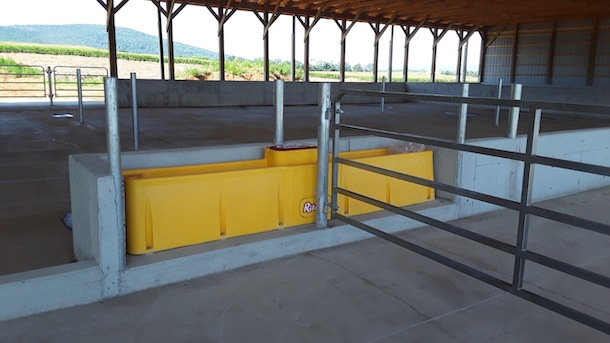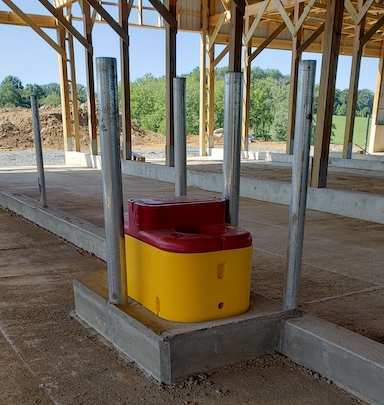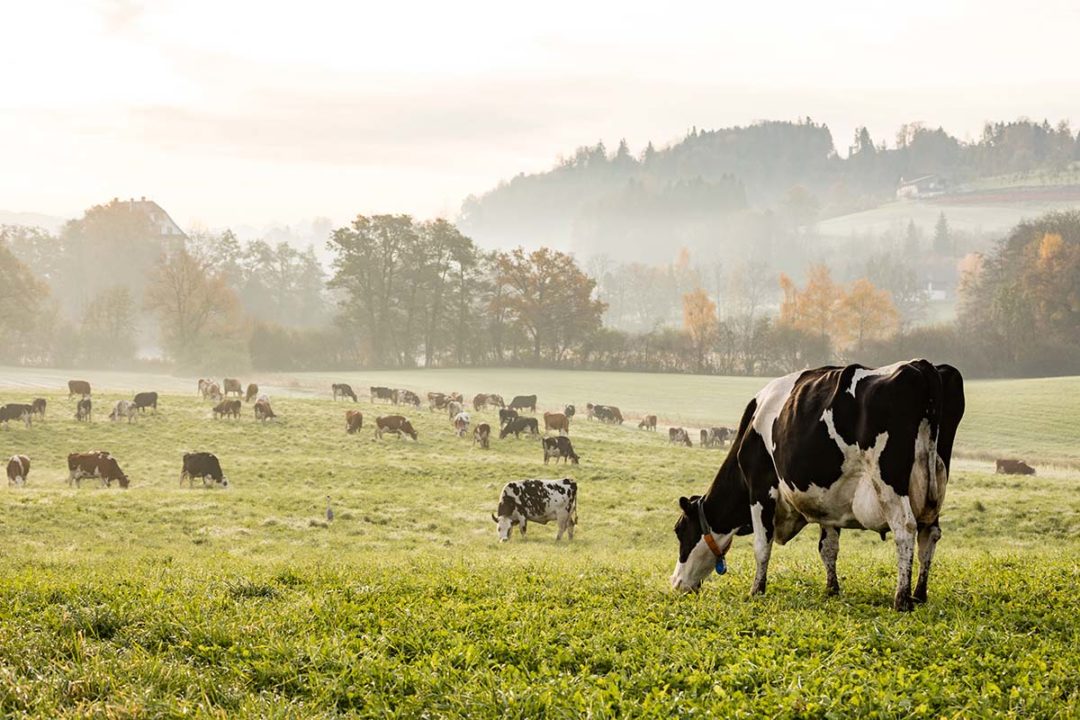Name the single nutrient that can impact milk production the most drastically. Hopefully you answered “water” but if you didn’t you are not alone. For most producers drinking water is not a top of mind concern. But consider this, water is the largest nutrient that you provide for your dairy cattle. High production dairy cattle have the largest water requirement per unit of body mass than that of any other land-based mammal. Milking cows drink between 30 to 50 gallons of water per day to produce a nutrient packed product that is itself typically 87% water. When the total daily nutrient intake for dairy cattle is analyzed, it reveals that 12% is compromised of dry matter intake and a whopping 88% is water.
Drinking water delivery, flow and refill rates – make sure your cows get enough to drink
There are two main issues that dairy producers need to consider about the drinking water on their farm: water quality and water delivery.
“I always tell my clients that water is the most essential nutrient because without access to good, clean, fresh water you will limit the animal’s ability to perform,” said Dr. King Hickman, DVM and founding partner of GPS Dairy Consulting in Sheldon, Iowa. “You want to make sure that you are testing the water periodically to make sure it’s not high in sulfates, nitrates, manganese or iron to ensure good water quality. Another issue I see most commonly is not providing enough water space for the size and capacity of the pens and the waterers may be undersized. A simple rule of thumb is to plan for two linear inches of water space per lactating cow. You need to have enough space around your water troughs so that the animals can get a drink while other animals can still pass through so the area doesn’t become a bottle neck.”
According to David Beede, Ph.D. and former C. E. Meadows Endowed Chair of Dairy Management and Nutrition in the Department of Animal Science at Michigan State University, dairy cattle will consume as much as 50 to 60% of their total daily water consumption immediately after milking when given a choice. This behavior has influenced the modern designs of milking barns with waterers strategically placed in return alleys, breezeways or crossovers. Waterers need to have an adequate refill rate to ensure that all the cows can drink as much as they want during a short period of time.
“Waterers that don’t perform well, meaning they weren’t filling quick enough can negatively impact milk production,” said Dr. Hickman. “You need enough water pressure and enough flow to meet the water demands of your cattle. Think about a water fountain that you or I might drink from that the water just barely dribbles out and you have a hard time getting enough water at one time or think about a water fountain that has too much pressure and the water just shoots out of the bowl. The availability of enough water for your animals is crucial to prevent subclinical dehydration in dairy cattle.”

2021 heifer barn construction at Stauffer Farms in North Lawrence, New York. Photo courtesy of Frankiln Builders.
Whether you are upgrading facilities or starting from scratch – new automatic waterers are a good investment
When Aaron Stauffer of Stauffer Farms in North Lawrence, New York began planning on a major expansion to the family owned dairy farm in 2009, he partnered with ag construction specialists Franklin Builders of Chambersburg, Pennsylvania to build a modern and efficient operation.
“It was a greenfield construction site and we expanded to house 3,800 total cows across two milking parlors and five barns,” said Stauffer, co-owner of Stauffer Farms. “When we started planning for the waterers, the foreman at Franklin Builders recommended Ritchie waterers and I was good with that. Since 2009 we have installed 56 Ritchie WaterMaster 1200 waterers and I can say that certainly compared to other brands I have had in the past, I have had less trouble with the Ritchie waterers and they have worked very well. We have been able to run these units energy free with little to no icing.
Our water pressure here in North Lawrence is fairly high and we use the high pressure water valve from Ritchie to make sure we have the proper flow to the waterers – roughly 16 to 22 gallons per minute. Our Ritchie waterers are pretty low maintenance and once we got the pressure and flow figured out, we really didn’t have to make any adjustments and the units have been very durable. We had a couple that developed some cracks and Ritchie stands behind their product with an outstanding 10 year warranty. I just had to send a picture of the crack and the date code on the unit and Ritchie took care of it right away. In 2021 we are adding a new heifer barn for animals of weaning age up to one year old. We are installing 26 more Ritchie waterers and we will run heat to those units because the heifer barns usually run a little colder.”
Stauffer Farms currently milks 3,300 cows three times a day utilizing two double 24 parallel parlors. Daily production is roughly 88 pounds per cow. The majority of the milk is shipped to Dairy Farmers of America.
“A lot of our milk goes to the Great Lakes Cheese plants in Adams, NY and Cuba, NY and also the Kraft Lowville cream cheese plant,” said Stauffer. “Our goals for the future include continuing to take advantage of opportunities to remain competitive in the industry. We are always evaluating ways to improve our bottom line and even minor decisions like using high quality waterers help our farm run efficiently and profitably.”

2021 heifer barn construction at Stauffer Farms in North Lawrence, New York. Photo courtesy of Frankiln Builders.
Lots of choices in automatic waterers – choose wisely
There are two main types of dairy waterers on the market currently - concrete and polyurethane waterers (with or without stainless steel troughs). Other options include insulation, heating elements and constant flow valves.
“When you are looking to install new or upgrade your waterers it is important to consider how fast they refill, how durable the units are, maintenance requirements, warranty coverage and how easy they are to clean,” said Jeff Miller, Ritchie Industries Sales & Marketing Manager. “For 100 years, Ritchie has been made in America and we produce the fastest, energy efficient founts in the industry. Our OmniMaster series is the latest in large herd innovation with a newly designed high-capacity drain to maintain the cleanliness of the fount. Every single Ritchie fount meets all Grade A dairy requirements, our poly units are 75% more efficient that comparable concrete units, they won’t pit and we offer several models that may qualify for utility incentives in several states. It all adds up to a more efficient and clean drinking environment. We have expertly engineered valves to serve any water pressure environment and your dairy cows won’t be able to outdrink a Ritchie.”
Ritchie Industries is headquartered in Conrad, Iowa, and was the first company to patent the automatic water valve in 1921. Ritchie has manufactured and sold over 3 million units globally.
Good water consumption = optimal yield
Proper water flow rate and drinking water consumption is critical to maintaining optimal milk production in your herd. Make sure your waterers are sized and calibrated to meet your cows’ water nutrition needs and invest in a high quality waterer like Ritchie to deliver clean, fresh water on demand.
For more information visit: Ritchie Industries, GPS Dairy Consulting or Stauffer Farms Virtual Farm Tour






